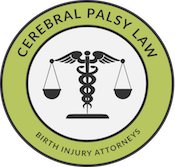Verdicts & Settlements: Delayed Emergency C-Sections
 In this section, you’ll read about a handful of our many cases handling injuries associated with C-section mistakes. As you read through our verdicts and settlements in other sections, you’ll note that many of our cases include instances of medical malpractice surrounding C-sections. The following instances are cases in which a large portion of the resultant injuries were caused by delays in the ordering and performing of emergency C-sections.
In this section, you’ll read about a handful of our many cases handling injuries associated with C-section mistakes. As you read through our verdicts and settlements in other sections, you’ll note that many of our cases include instances of medical malpractice surrounding C-sections. The following instances are cases in which a large portion of the resultant injuries were caused by delays in the ordering and performing of emergency C-sections.
The medical and emotional burdens of a birth injury diagnosis can be devastating. If you know a child whose birth injury was caused by a delayed or failed C-section delivery, we implore you to seek legal help from our Michigan cerebral palsy lawyers. Our attorneys have decades of specific experience fighting to obtain compensation for medical malpractice cases surrounding Cesarean section delivery, hypoxic ischemic encephalopathy (HIE), and related injuries. You may contact our birth injury experts toll-free at (888) 592-1857 or fill out our online contact form here.
1. Child Wins $6.9 Million
Delayed Emergency C-Section Leads to Hypoxic Ischemic Encephalopathy (HIE) and Birth Anoxia with Resultant Cerebral Palsy
This case began when the mother went to the hospital in labor and nurses and residents carelessly monitored the fetus’s heart rate for twelve hours. During these twelve hours, residents and nurses watched as fetal heart tracings signified worsening fetal distress signals, and they failed to notify the physician in charge of delivery. The resident physician finally called the physician and an emergency C-section was performed. Unfortunately, the baby had suffered prolonged oxygen deprivation and was left with permanent brain damage, hypoxic ischemic encephalopathy (HIE; birth asphyxia), and birth anoxia (a condition caused when insufficient levels of oxygen reach the organs). The baby was ultimately diagnosed with cerebral palsy.
2. Child Wins $4.75 Million
Failure to Diagnose Preeclampsia and Perform Emergency C-Section Leads to HIE and Brain Damage with Resultant Cerebral Palsy, Developmental Delays, and Intellectual Disabilities
In this case, a mother beyond her due date exhibited signs of high blood pressure, fetal distress, and fetal oxygen deprivation, so she went to the hospital and expressed feelings of cramping and pain. She communicated to hospital staff that she was in labor, but after running an ultrasound and fetal heart rate assessment, she was sent home without being seen by a physician or resident. When the mother came back five days later, her baby had a significantly diminished heart rate and was delivered via emergency C-section. After delivery, the mother was diagnosed with preeclampsia and her son was born with low Apgar scores, extremely acidic blood, brain damage, hypoxic ischemic encephalopathy, and resultant cerebral palsy, intellectual disabilities, and developmental delays. Had medical professionals diagnosed preeclampsia and performed a C-section delivery at the time mandated by the standard of care, the boy could have been born without lifelong disabilities.
3. Child Wins $3.9 Million
Delayed Emergency C-Section on Distressed Fetus Leads to Hypoxic Ischemic Encephalopathy (HIE) and Trauma with Resultant Cerebral Palsy and Seizure Disorder
In this case, the birth injury lawyers at Michigan Cerebral Palsy Attorneys asserted that a few different instances of negligence contributed to the baby’s hypoxic ischemic encephalopathy (HIE), brain damage, and cerebral palsy. Throughout her pregnancy, the child’s mother experienced a genital herpes diagnosis, a gestational diabetes diagnosis, and a scabies rash. These complications are known to increase a fetus’s risk of macrosomia, birth trauma, and oxygen deprivation. Additionally, the baby’s gestational age was unclear—two ultrasounds suggested different gestational ages and the date of conception was indeterminate. However, since the mother had gestational diabetes, it was important that the baby was delivered between 39 and 40 weeks of age in order to avoid complications. The presence of meconium in the amniotic fluid, non-reassuring fetal heart tracings, and fetal monitoring signals proved that the child wasn’t able to tolerate vaginal delivery and instead required a C-section. When the C-section was finally performed, the baby had suffered oxygen deprivation and birth trauma and required resuscitation. She was born with a slow heart rate, seizures, abnormal head imaging, and cerebral palsy.
4. Child Wins $1.95 Million
A Delayed Emergency C-Section Leads to Hypoxic Ischemic Encephalopathy (HIE) with Resultant Cerebral Palsy and Developmental Delays
At just over 40 weeks of pregnancy, medical professionals tested the mother’s amniotic fluid levels. Results signified that her amniotic fluid levels had lessened considerably while remaining in the normal range. Since medical professionals estimated that her fluid levels were still technically in the average, healthy range, doctors sent the mother home. When her water broke the next day, her baby was delivered by way of an emergency C-section and suffered hypoxic ischemic encephalopathy (HIE) during the delivery. Our expert birth injury lawyers found that, despite remaining in the normal range, the mother’s amniotic fluid levels should have been addressed and evaluated with further scrutiny. Due to the hypoxic ischemic encephalopathy and oxygen deprivation inflicted around the time of delivery, the child now lives with cerebral palsy and severe developmental delays.
5. Twin Wins $2 Million
Delayed Emergency C-Section Leads to Birth Asphyxia with Resultant Developmental Delays
 After an otherwise healthy pregnancy, the mother of twins went into labor at 38 weeks of gestation. Medical professionals did not give the mother the option of a C-section delivery, and once the mother was dilated fully, she was taken to the operating room for a vaginal delivery. Throughout the majority of labor and delivery, the fetal monitoring technology did not properly work.
After an otherwise healthy pregnancy, the mother of twins went into labor at 38 weeks of gestation. Medical professionals did not give the mother the option of a C-section delivery, and once the mother was dilated fully, she was taken to the operating room for a vaginal delivery. Throughout the majority of labor and delivery, the fetal monitoring technology did not properly work.
Medical professionals mistakenly administered a dose of anesthesia appropriate for a C-section delivery instead of a vaginal delivery, ultimately leading to maternal low blood pressure (hypotension), numbness from the abdomen down, abnormal fetal heart tracings, and a delay in delivery. Medical professionals did not inform the mother of the error and had her wait for the effects of the anesthesia to subside before continuing with delivery.
After an hour and forty minutes, medical professionals led the mother back to the operating room, where she vaginally delivered both twins. The first twin suffered metabolic acidosis. The second twin suffered umbilical cord prolapse, ultimately necessitating an emergency C-section to avoid hypoxic ischemic encephalopathy. A delay in performing the emergency C-section resulted in developmental delays and speech impairments in the second twin.
6. Child Wins $1 Million
Unsuccessful Vaginal Delivery of a Macrosomic Baby and Hypoglycemia After Birth Led to Birth Trauma with Resultant Severe Cognitive Impairment
The mother in this case had previously delivered several normally-sized children. During her pregnancy, she gained 150 lbs. Such weight gain was a risk factor for the baby also being macrosomic, requiring a C-section instead of vaginal delivery. Hospital staff concluded – on the basis of her prior history – that she would have a normal-sized child. Her medical records did not show signs of a fetal weight estimate or ultrasound to confirm their predictions. After a 14-hour labor that demonstrated that vaginal delivery was not possible, a C-section was ordered. The child was found to be macrosomic (of very large size). The child then developed very low blood sugar. As a result, the child has cognitive impairments with an IQ of 50.
7. Child Wins $987,000
Failure to Detect Severe Fetal Distress Promptly Leads to Hypoxic Ischemic Encephalopathy (HIE) and Birth Asphyxia
In this case, the mother had a pregnancy longer than 40 weeks; medical professionals scheduled an induction several days after the estimated delivery date. Two days before the scheduled induction date, the mother drove to the hospital to report pressure in her abdomen. Medical staff placed her on a fetal monitor and noted the presence of contractions. She was discharged several hours later when the contractions lessened. The night before the induction date, the mother felt contractions again and drove to the hospital, and was admitted after several hours. The fetus showed severe distress, prompting a call for an emergency C-section, but the C-section was not completed before oxygen deprivation injury occurred. The child has weakness on one side of their body, cognitive delays, and a low normal IQ.
